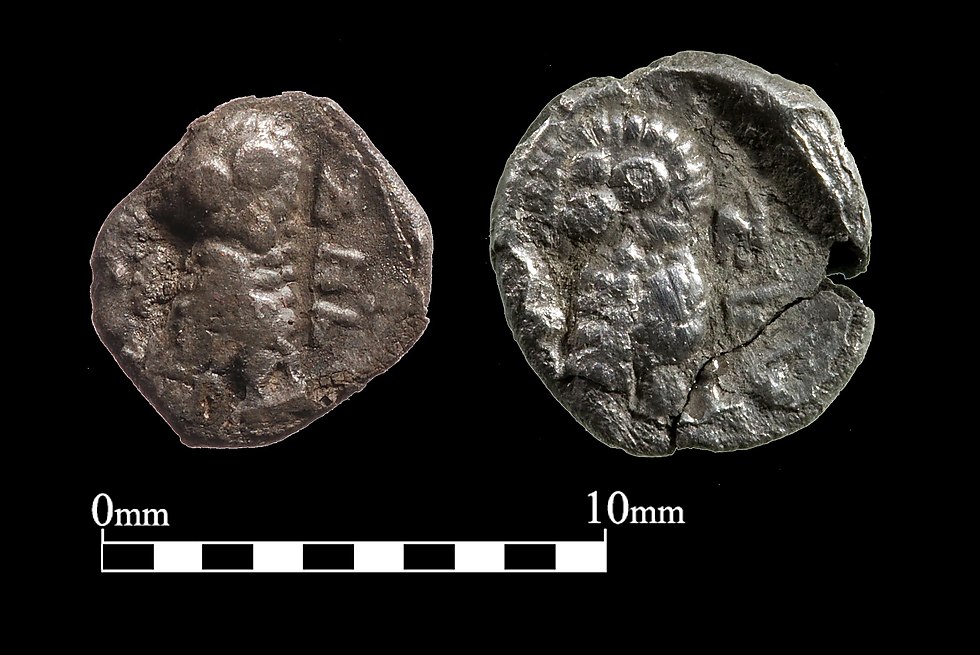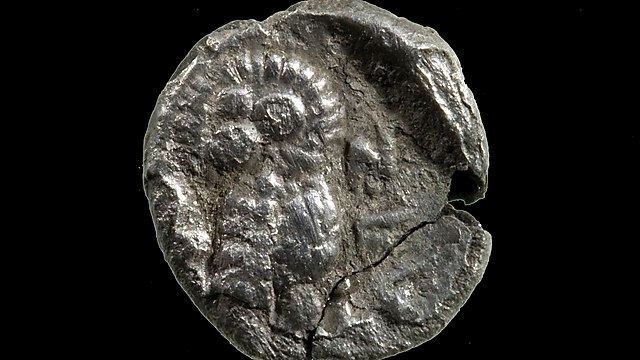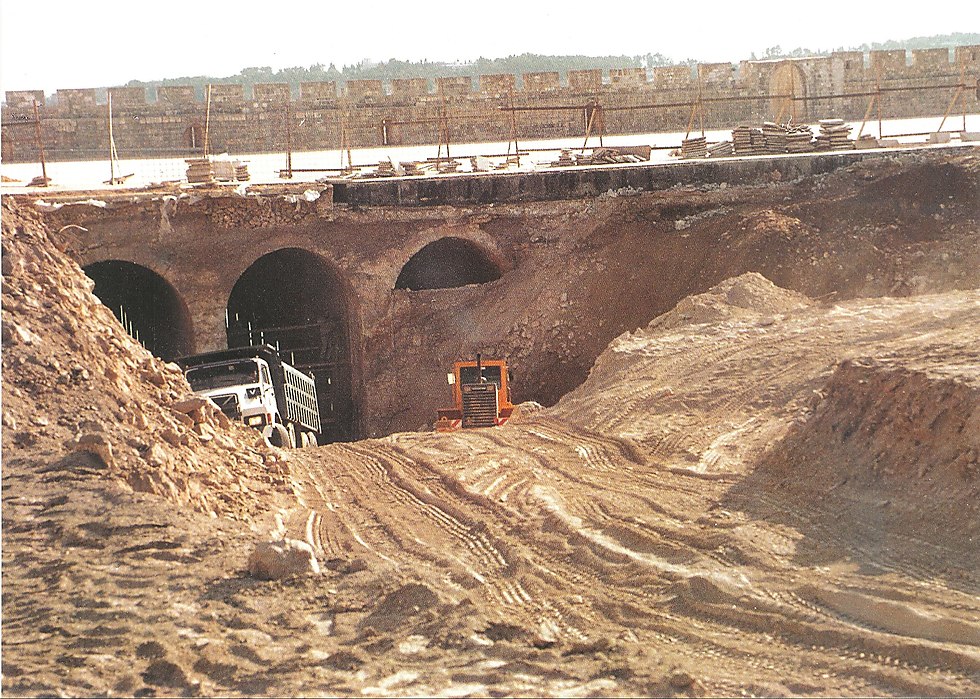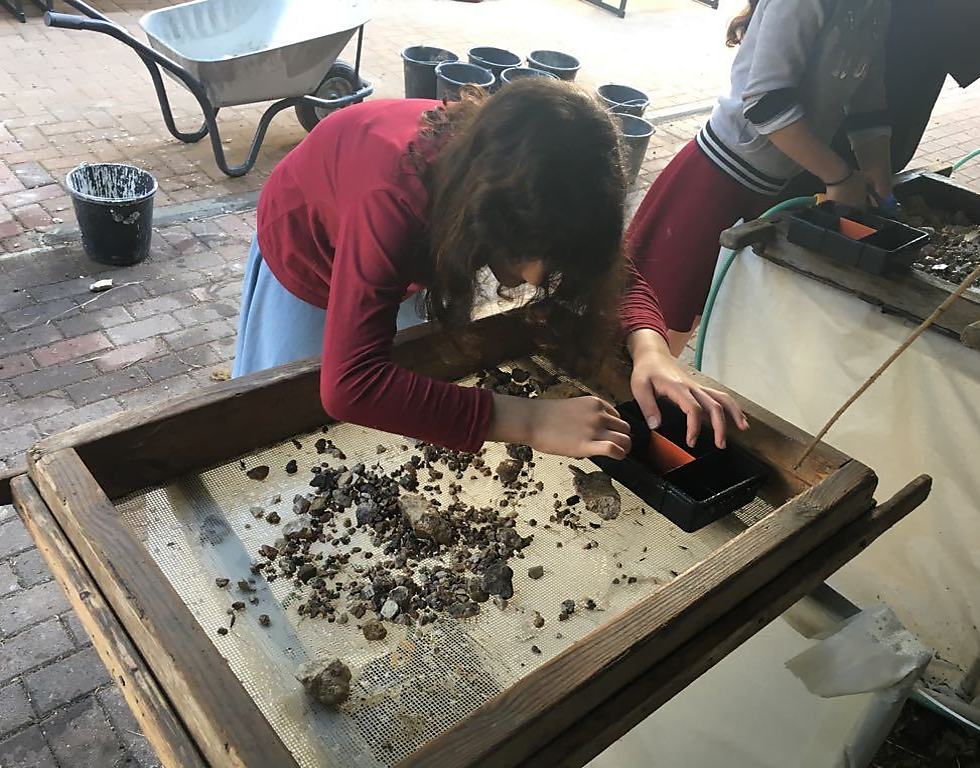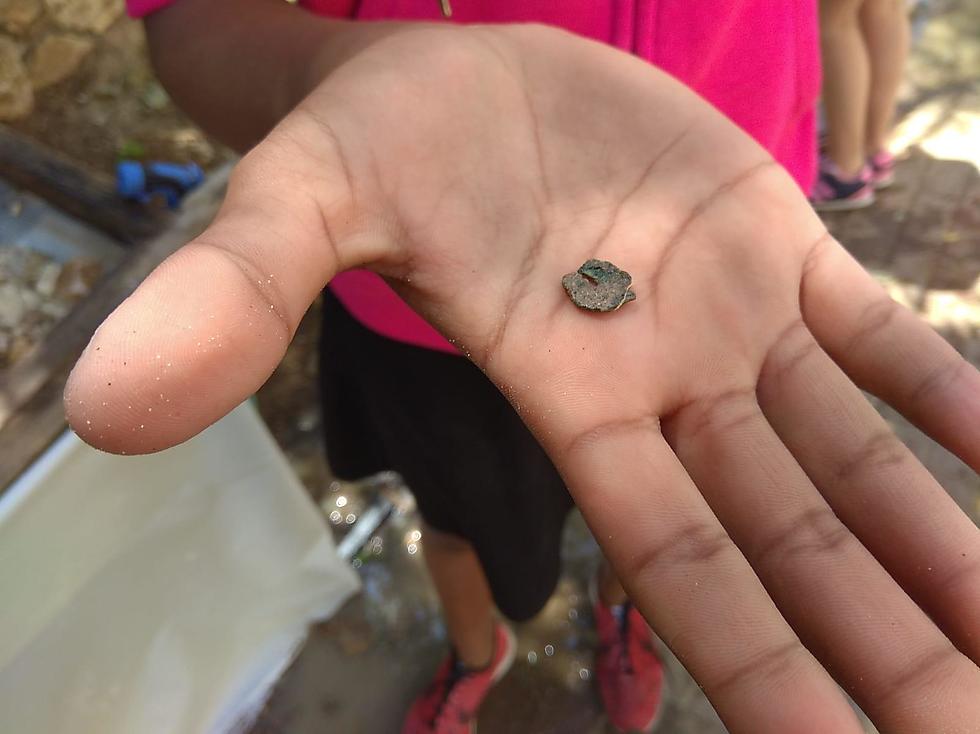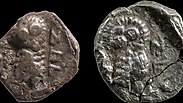

5 rare Jewish coins discovered by Temple Mount project
Coins, minted by autonomous Jewish province of the First Persian Empire in late 4th century BC, attested to existence of commercial, administrative life in and around Second Temple and Temple Mount; 'These were the first coins ever minted by Jews,' says project's co-director, adding pilgrims would convert their tithes into these coins.
The coins were inscribed with the letters "YHD," or Yehud, the Aramaic name for the First Persian Empire's province of Yehud—roughly equivalent to the older biblical kingdom of Judah. They are dated to the end of the 4th century BC.
According to Zachi Dvira, who co-directs the project along with Dr. Gabriel Barkay, "Throughout the 150 years of archeological digs all across the sites of ancient Jerusalem, only five of these coins were ever found. We have now found three whole coins, along with two eroded ones, apparently from the same series, and assume we'll find more in the future."
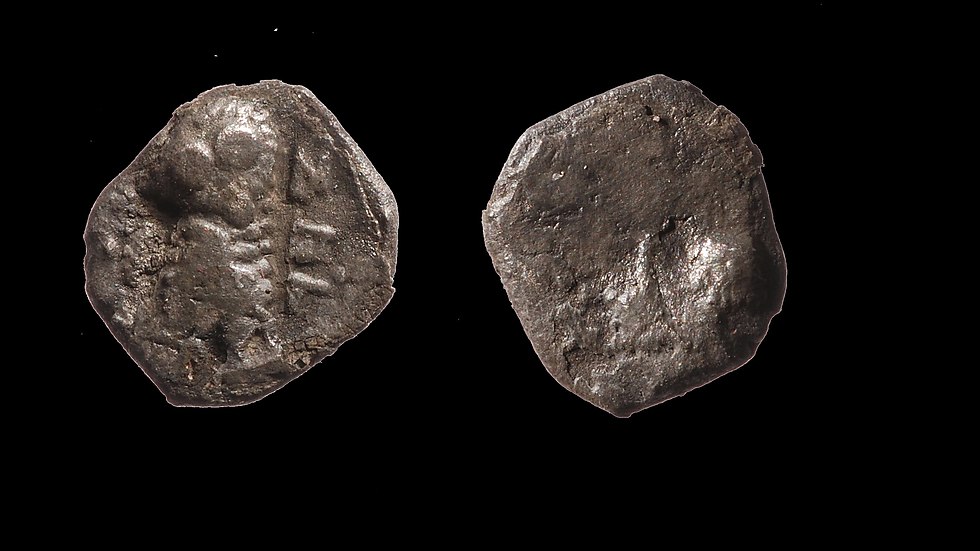
The coins, he added, may have even been minted on the Temple Mount itself, as "all governing institutions were near the Temple Mount, from which they drew inspiration for their activities."
Pilgrims, Dvira explained, brought the first fruits of the season to the Temple starting around the time of the Jewish festival of Shavuot, and would also bring tithes, donations other such gifts. Biblical verse says these could then be converted for silver, or coin in the days of the Second Temple.
"This may be the reason why when coins began coming into usage in Judah, silver was the most often used metal," he said.
First Jewish coins
There were other reasons for the relative wealth of coins being discovered on the Temple Mount, Dvira said, namely the project's proprietary wet filtration method, and the fact that the Temple Mount was also a commercial and administrative center in the early days of the Second Temple—contemporaneous with the Yehud coins' minting.
"These were the first coins ever minted by Jews," the archeologist revealed. "They express the people's return to their land after the Babylonian exile, and their ability to hold and maintain diplomatic ties with the ruling empire—then Persia—similar to our relations with the United States today."
"Ironic that at a time where Iranians are openly speaking of destroying Israel, coins are uncovered from a time where the Persian regime was favorable towards Jews and allowed them to live in Israel in dignity," he added.
Inspiring the new Israeli shekel
While the rare coins were made from the precious metal of silver, they were minute in size—with a diameter of only seven millimeters.
The coins' design bore a striking resemblance to the ancient world's most widespread currency—the Athenian obol—and not coincidentally, as the Jewish minters copied it down to the symbol of the barn owl—an impure animal in Judaism that was synonymous with the Greek city-state.
However, the Jerusalemites did change the writing on the coin, from the Greek inscription of ΑΘΕ, symbolizing Athens, to the letters YHD in ancient Hebrew script, representing the Yehud Medinata, or autonomous province.
"Jerusalem was the capital of the Yehud Medinata at the time," Dvira explained. "These rare coins reflect the beginning of the transition in the region from trade using goods and precious metals—such as gold and silver—to trade using government-monitored coinage."
"Unlike today, the commercial value of ancient coins was equal to the weight of the metal used in their minting. However, similar to the modern market, the writing on the coin attested to the fact it was minted under state supervision," he expounded.
As an aside, Dvira noted that the new Israeli shekel minted by the Bank of Israel, which serves as the basic denomination in the country's monetary system, bears the three letters of YHD, exactly as they appear on the recently uncovered coins.
A project in crisis
The Temple Mount filtration project traces its roots to 1999, when the Islamic Movement carried out infrastructural works on the site without permit or coordination.
As part of the works, the Waqf—the Islamic trust administering the edifices on and around the Temple Mount—performed digs and excavated hundreds of tons of dirt into the nearby Kidron Stream.
Archeologists from both Israel and the world were appalled by the action, with some even claiming it was motivated by an agenda to obfuscate any archeological evidence linking the Jewish people to the contested site.
Barkay and Dvira then initiated the filtration project in 2004, in the Emek Tzurim National Park.
They called on volunteers from Israel and abroad to assist in the painstaking, meticulous filtration work—and their project has led to discoveries of rare items, including a First Temple seal belonging to a priest that served as proof positive of the Temple's existence, a fact that had been disputed by some archeologists.
The filtration project has been performed under the academic auspices of Bar Ilan University's archeology institute, and is funded by philanthropic funds and private donors.
The Mount is coming to schools
State funding for the filtration project was halted in April 2017. While Prime Minister Benjamin Netanyahu iterated his willingness to assist in finding an alternative source of funding, nothing was done.
Dvira and Barkay thus decided to change tack, undertaking an experimental project as part of which "instead of diggers coming to the Temple Mount, the Temple Mount will come to the diggers."
A convoy of trucks brought dirt from the Temple Mount to the Yeshurun high school in Petah Tikva last week, alongside filtration stations and water piping. Students and faculty sifted through the dirt for two hours, and then watched an educational presentation about the history and archeology of the site.
The findings from the school's efforts will be reviewed at a later date.
"Since this is sifting rather than actual dig work," Dvira said, "large groups of people can be brought in on the effort to save the archeological findings buried deep in the mounds of dirt."
"After holding sifting activities in the Emek Tzurim National Park in the past, it has now become something of a mobile activity, planned to tour nationwide and work with a variety of audiences, including schools, public institutions and communities of all kinds," he concluded.














